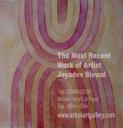
opening of drawing and painting exhibition by gajendra prasad sahu
Gajaendra Prasad Sahu’s Solo show has innaugurated by Dr. Subash Ch Pani at IHC Senior Artists like Kashinath Jena shared his valuable thoughts with all young artists present at opening, This exhibition will continue at Ashok Art Gallery
An Exhibition of recent drawing and painting was organised at Open Palm Court Gallery by Ashok Art Gallery from 14th -16th feb 2009, gathered by many artists and art lovers, Gajendra Prasad’s work gets heavily appriceations from both side.
Orissa has been a store house of ideas and images consistently transformed through the history. Artists of Orissa, while keeping the value of its tradition, have tried to keep pace with the need of time. Thus it is obvious to find a blend in the art forms of today. Several contemporary artists from Orissa are practising in coordination with the creativity and tradition, Gajendra Sahu is one of them.
Gajendra Sahu is essentially a graphic artist who is at present engaged in painting, thereby breaking the norms of the painter-printer convention. I still remember few drawings by him in the same pattern, and that reminds me of his association with these forms which are designated and stylistic. It is necessary to highlight the stylistic advantages that are visible in his painting for example the graded yet bold lines, the formal precision and the colour application which has a greater relevance to printing effect.
The compositions are interesting not because of their presence but for their appearance, with a contrast compartmental background seemingly synchronising the visual feast. The second factor it emphasises is the man-nature relationship. The relationship might just be as natural as normally seen in an Orissan environment. The nature is more decorative and conceivably symbolic. The situation has ceased to accommodate the viewer for interaction or is it initiating a rendezvous! The figures seem to reflect an amalgamation of the Orissan traditional forms and conventional drawing.
The subject treatment is much nearer to the mood of the artist. The human faces are nurtured in different condition; pale, melancholic sometimes or may be lost in the urban chaos, or searching a niche for their survival. Being within the nature, they are in a state of discomfort. This brings us to one larger understanding of within and without, containment and exploring, fullness and empty etc. These are subjective view points, entailing the third person to engage in evaluation. This is the state of Orissan art in Orissa, having enormous heritage and cultural potency to encourage any creative discipline, but looking forward to a strange acceptance, forgetting that purity has no language, but expression.
Dr. Pradosh Kumar Mishra
Associate Professor
Department of History of Art
Banaras Hindu University




























You must be logged in to post a comment.